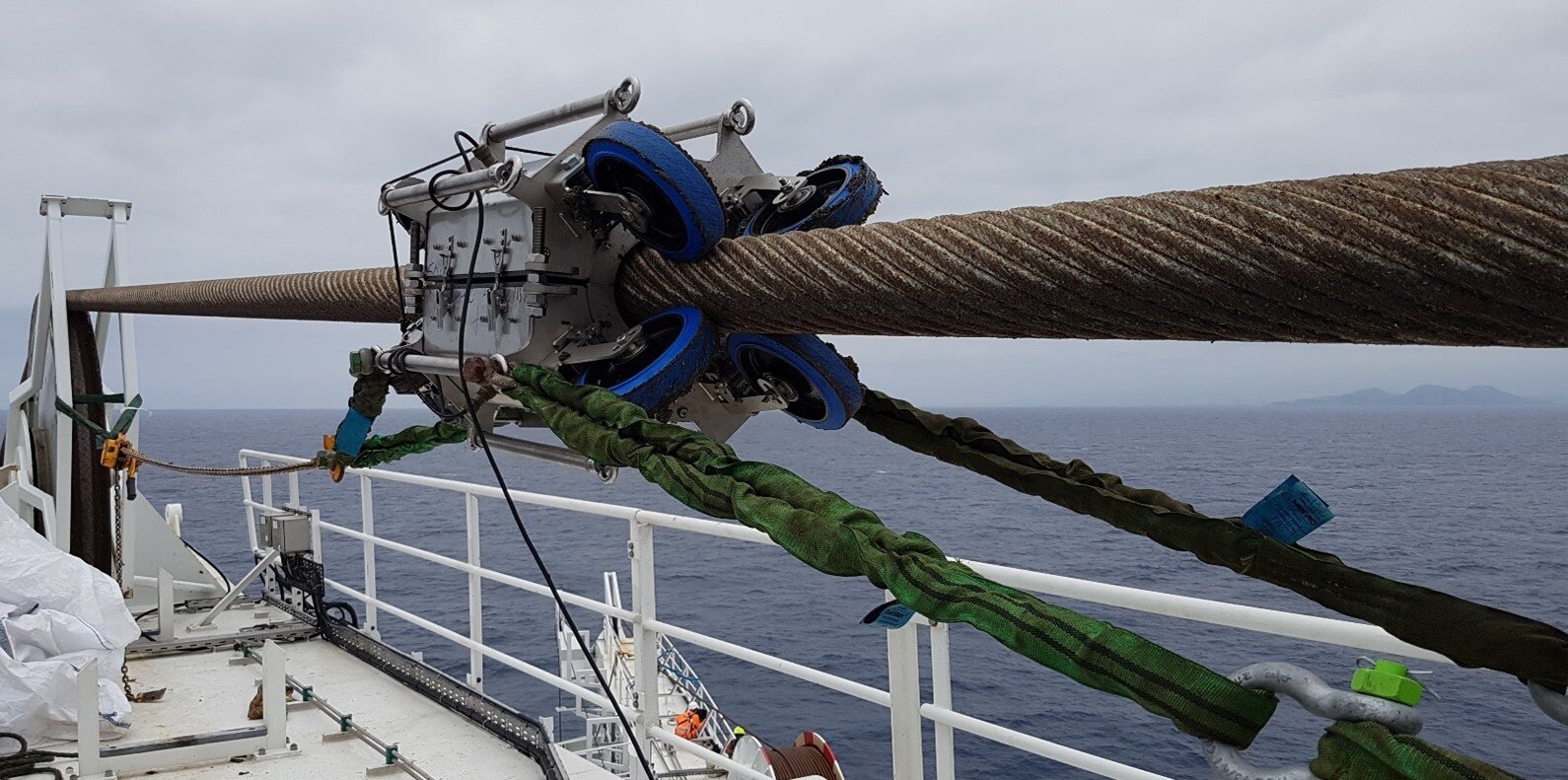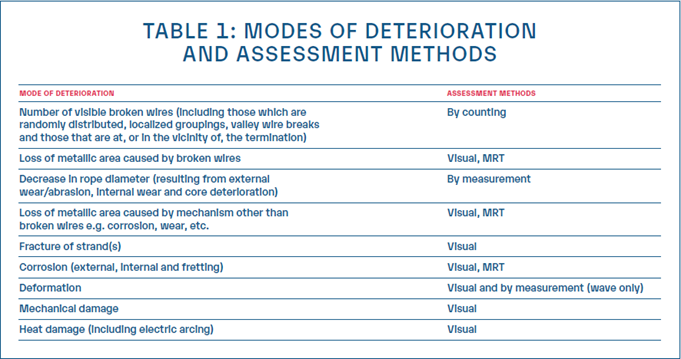In this article, the reader will find all the information necessary for a conscious use of the MRT equipment, perfectly in compliance with the ISO4309 regulation. We hope that this short read will help the rope maintainers to evaluate autonomously how to behave during an inspection.
This article has been written with the intent of clarifying misinterpretations of the ISO4309 but it cannot substitute in any case the regulation. Each rope maintainer is highly invited to read the ISO4309 before performing any rope inspection.
The magento-inductive method
The magneto-inductive method was born at the beginning of the 20th century in ropeways sector, where safety criteria have always been the strictest. In the following years the technology evolved, devices became smaller, lighter and cheaper and around the 80’s they arouse the interest of the heavy lifting sector. Since the early 2000s, the methodology began to be used widely, especially in the offshore sector, where ropes operate in a very harsh environment.

The usefulness of the method is so relevant that in the ISO 4309: 2010 it was indicated as a valid aid to visual inspection (chapter 5.6), but at the end of 2017 the new version of the standard (ISO 4309: 2017) was finally released, introducing the magneto-inductive test in the assessment methods table for rope status evaluation. New discard criteria were specially defined. The magneto-inductive method officially became an aid to the visual inspections and the preferred solution for performing internal rope inspections.
Why is the magneto-inductive method so important for wire rope inspections?
Since the MI method was introduced in the ISO 4309 it is a valid aid for the operator for avoiding subjective evaluations (e.g. see ISO4309, Table 3,4,5,6)
The MI method must always be associated with a visual inspection. The competent person detects visible defects and correctly compiles the test report; if defects are not visible but highlighted by the MRT, the operator rates the severity of the deterioration, as defined by the regulation. The MRT is often the only way to carry out an internal inspection.
Are inspections defined by the regulation?
Yes, if the rope manufacturer follows the EN12385 - Steel wire ropes – Safety the inspector must always be in compliance with the regulation ISO 4309.
The regulation establishes general principles for care, maintenance, inspection and discard of steel wire ropes operating on cranes and hoists. The ISO4309 states the assessment method for any type of defect can occur on a rope.
It provides realistic discard criteria and gives a method for evaluating the combined effect of deterioration at any position in the rope.
The Table below of the standard lists the more common modes of deterioration and whether each can be readily quantified or needs to be subjectively assessed by the competent person.

For all these modes of deterioration the competent person must express a severity rating, which is the result of the relative assessment method.
For example, regarding the reduction in diameter the measurement is necessary, whilst, regarding the number of visible broken wires, counting is the appropriate method.
Inspectors must evaluate wear and corrosion inside and outside the rope. Furthermore, they must evaluate the loss of metallic section caused by internal and external broken wires.
It is well known that some specific defects generate in the inner part of the rope. In this case it is almost impossible to perform a visual inspection. For this reason, the ISO4309 assesses the Magnetic Rope Test as the preferred method for “Loss of metallic area caused by broken wires”, “Loss of metallic area caused by mechanism other than broken wires” and for “Corrosion (external, Internal and fretting)”. Thanks to this specific methodology the competent person is able to inspect the modes of deterioration as prescribed by the regulation.
How can a person know if a rope manufacturer following the EN12385?
In the European community the ISO4309 is claimed by a harmonized regulation, the EN12385.
Every rope commercialized in Europe must follow the EN12385, and it should be written on the specific rope “Use & Maintenance Manual”.
The compliance with this latter regulation provides a presumption of conformity with the relevant essential requirements of the directive 98/37/EC. For this reason, the rope manufacturers have two options:
- Following the regulation and claiming it on their “Use & Maintenance Manual”, as inspection procedure
- Otherwise they must issue a rope certificate defining different discard criteria and assessment method that must be as safe as the ones in the ISO4309
What is there is no "Use & Maintenance Manual"?
It could happen that the manual is not available. In this case, it should be mandatory to follow the relative regulation, for example the ISO4309 for ropes. Anyway, the laws of the country you’re performing the inspection in, must always be followed.
Conclusion
The competent person must be aware of how he’s performing the inspection, because he must take care of his own safety and the one of the plant, he must always follow the ISO4309 regulation to be in compliance with the correct inspection procedure.
To hasten the efficiency of the MRT method, we highly suggest the reader to check our article: “The visual Inspection and the MRT”.

More about Magnetic Rope Testing?
Discover our articles about Magnetic Rope Testing (MRT):
- When is an MRT suggested?
- The EN12927, is your MRT device in compliance with the standard?
- Localized Fault VS Loss of Metallic Area
- MRT-training
- A permanent MRT system
- The magnetization curve of a steel wire rope
- How is MRT equipment made
- How to choose an MRT device
- How to develop customized magneto-inductive equipment




